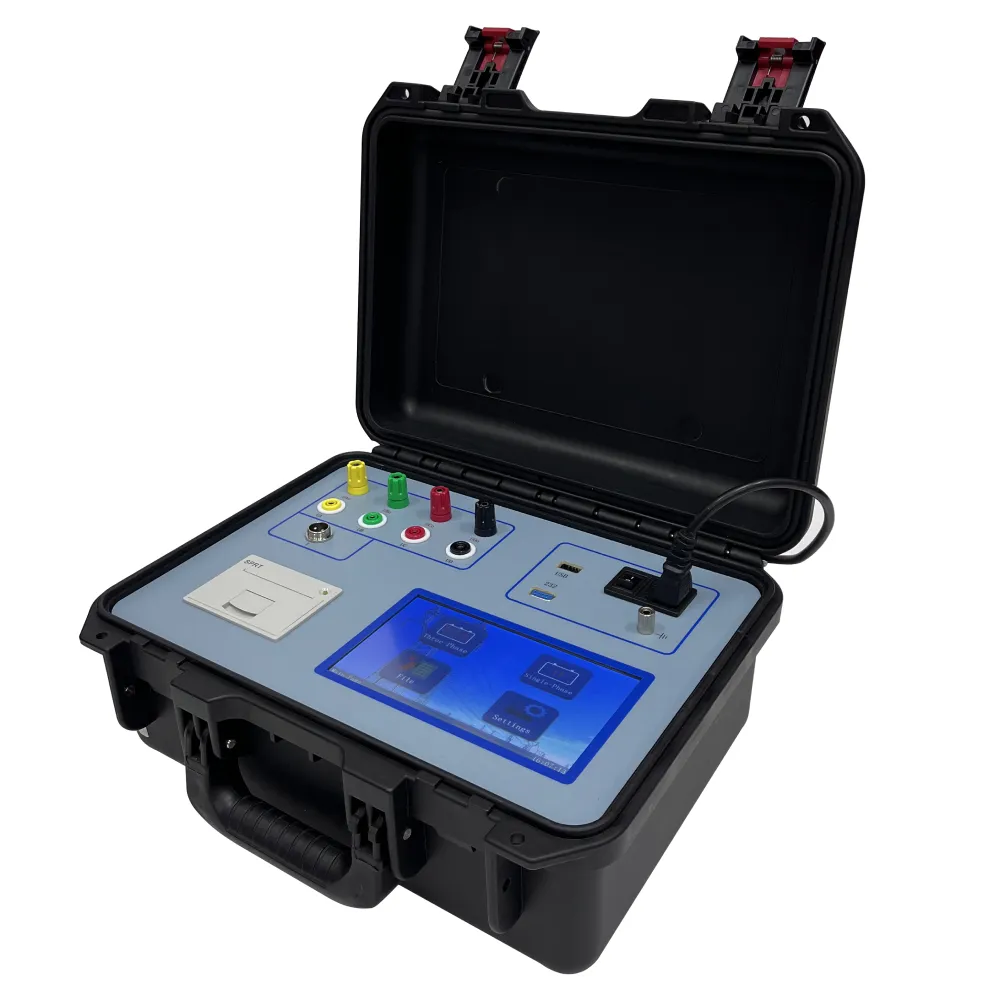 English
English


Evaluating Transformer Performance Through Comprehensive Resistance Testing Methodologies and Techniques
Resistance Test of Transformer
Transformers are crucial components in electrical power systems, serving to transfer electrical energy between two or more circuits through electromagnetic induction. To ensure their reliable operation, regular testing and maintenance are essential. One of the critical tests performed on transformers is the resistance test, which assesses the integrity and condition of the windings.
The resistance test, commonly known as the winding resistance test, measures the resistance of the transformer windings. This test helps to identify any issues related to winding deterioration due to factors like overheating, loose connections, or winding faults. By evaluating the resistance values, technicians can ascertain the winding's health and predict potential failures.
Purpose of the Resistance Test
1. Detecting Winding Issues Over time, the windings of a transformer can develop faults due to thermal stress, insulation breakdown, or mechanical stress. Measuring resistance provides insights into the winding condition and can indicate problems such as shorted turns or degradation.
2. Verifying Connections Poor or corroded connections can lead to increased resistance in the circuit, resulting in energy losses and inefficient operation. The resistance test can help locate these compromised connections.
3. Baseline Measurements It is crucial to establish baseline resistance values when a transformer is initially commissioned. These baseline values can be used for future comparisons to assess any changes over time that might indicate degradation.
Procedure for Resistance Testing
The resistance test is generally conducted using a digital micro-ohmmeter or an AC resistance test set
. The procedure typically involves the following stepsresistance test of transformer

1. Preparation The transformer should be de-energized and isolated from the power source. Proper safety precautions must be taken to safeguard personnel and equipment.
2. Connection Test leads are connected to the transformer windings, usually at the terminal points. Care should be taken to ensure solid connections to avoid erroneous readings.
3. Testing Once the connections are secure, the tester is powered on, and resistance measurements are taken. The test typically involves applying a low DC current through the windings, which helps to eliminate the influence of inductive components.
4. Data Recording The measured resistance values are recorded carefully. It is also advisable to perform multiple readings and average them to enhance accuracy.
5. Comparison and Analysis The recorded values should be compared with the manufacturer’s specifications and the baseline measurements. Significant deviations from expected values may indicate underlying issues that require further investigation.
Interpretation of Results
A higher-than-expected resistance reading may signify potential issues, while much lower readings could hint at shorted turns within the winding. Environmental factors, such as temperature, also play a role; therefore, it is vital to consider the ambient conditions when interpreting the results. Regular resistance tests, combined with other diagnostic tests such as insulation resistance and power factor tests, provide a comprehensive understanding of a transformer's health.
Conclusion
The resistance test of a transformer is an essential diagnostic tool that helps ensure the reliability and efficiency of electrical power systems. By identifying issues in the winding and connection integrity, technicians can take proactive measures to maintain operational safety and efficiency. Regular testing, alongside a robust maintenance schedule, is vital for extending the lifespan of transformers and preventing costly downtime or catastrophic failures in the electrical network. As the importance of a reliable power supply continues to grow in our increasingly electrified world, the value of thorough testing practices cannot be overstated.
-
Differences between open cup flash point tester and closed cup flash point testerNewsOct.31,2024
-
The Reliable Load Tap ChangerNewsOct.23,2024
-
The Essential Guide to Hipot TestersNewsOct.23,2024
-
The Digital Insulation TesterNewsOct.23,2024
-
The Best Earth Loop Impedance Tester for SaleNewsOct.23,2024
-
Tan Delta Tester--The Essential Tool for Electrical Insulation TestingNewsOct.23,2024





